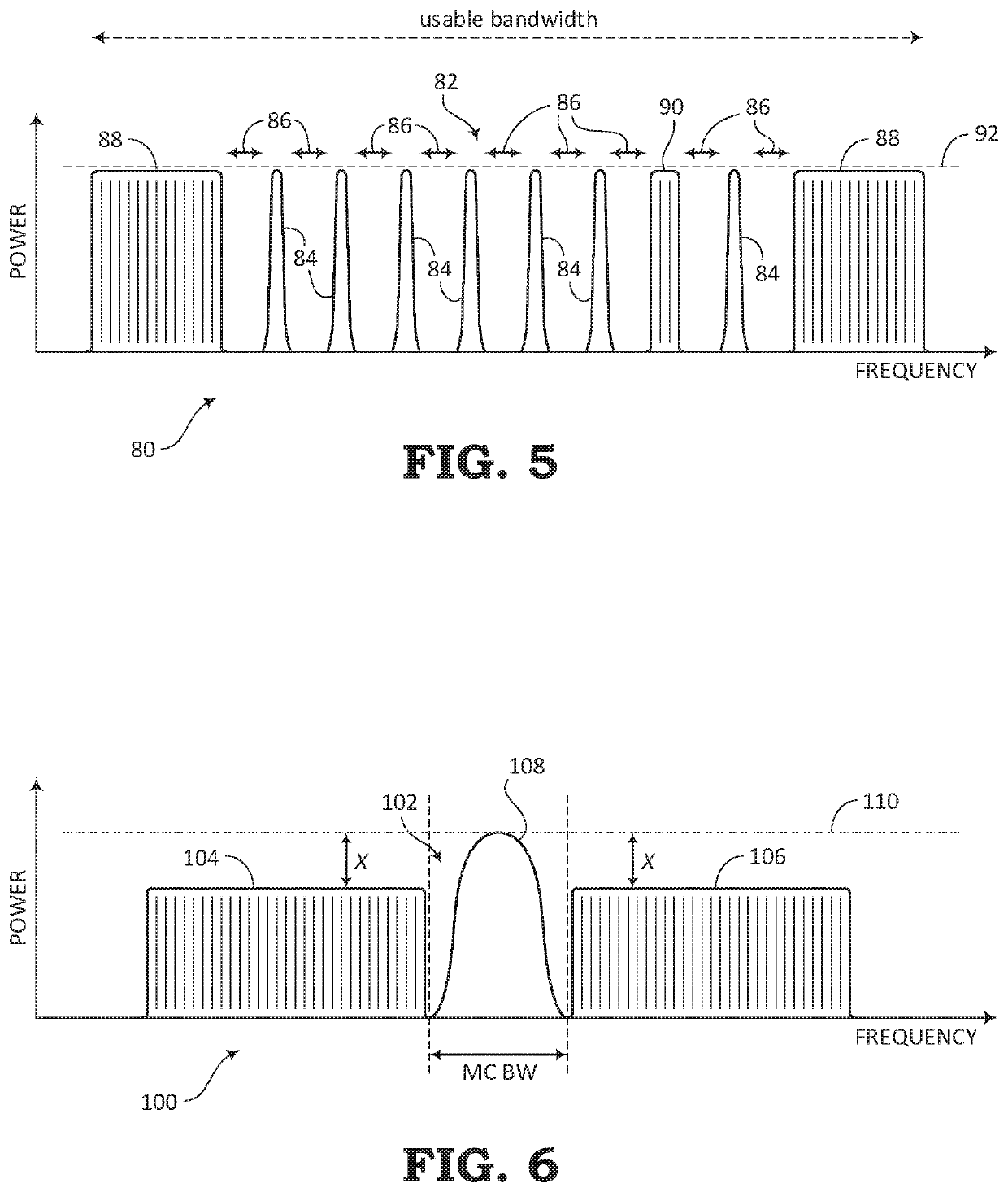Reducing interference from channel holders in an optical link
a channel holder and optical link technology, applied in the field of optical communication networks, can solve the problems of introducing significant non-linear noise, interference in the optical signal may affect the specific, and affecting the specific, and achieve the effect of reducing interferen
- Summary
- Abstract
- Description
- Claims
- Application Information
AI Technical Summary
Benefits of technology
Problems solved by technology
Method used
Image
Examples
Embodiment Construction
[0026]The present disclosure relates to systems and methods for communicating optical signals within an optical communication system. The optical signals can be amplified through the optical communication system by a process referred to as Amplified Spontaneous Emission (ASE). In addition to amplifying the data portion of the optical signals, the ASE process may also include filling unused bandwidth with channel holders for maintaining a certain power level throughout the usable spectrum. The present disclosure describes an improvement over conventional ASE channel holding techniques by substantially maintaining the target total launch power, while further providing the benefit of reducing the interference that the channel holders may normally cause to the useful optical data signals.
[0027]The systems and methods described in the present disclosure may be used in a Reconfigurable Line System (RLS). The channel holder creation and injection systems for adding channel holders based on...
PUM
 Login to View More
Login to View More Abstract
Description
Claims
Application Information
 Login to View More
Login to View More - R&D
- Intellectual Property
- Life Sciences
- Materials
- Tech Scout
- Unparalleled Data Quality
- Higher Quality Content
- 60% Fewer Hallucinations
Browse by: Latest US Patents, China's latest patents, Technical Efficacy Thesaurus, Application Domain, Technology Topic, Popular Technical Reports.
© 2025 PatSnap. All rights reserved.Legal|Privacy policy|Modern Slavery Act Transparency Statement|Sitemap|About US| Contact US: help@patsnap.com



